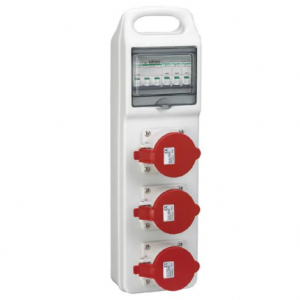In industries reliant on continuous web processing, such as printing, packaging, textiles, and converting, maintaining precise alignment of the web (a thin, flexible material) is critical. Misalignment at high speeds can lead to defects, wasted materials, and downtime, impacting both productivity and cost-effectiveness. Automated alignment systems for high-speed web guiding address these challenges, offering unprecedented precision, reliability, and efficiency. This article delves into the technology, benefits, applications, and innovations in automated alignment systems for high-speed web guiding.

The Need for Automated Alignment in High-Speed Web Guiding
High-speed web guiding system involves guiding and aligning continuous materials like paper, film, or fabric as they move through production processes. Precise alignment is essential to ensure uniform quality and prevent issues such as wrinkling, tearing, or edge irregularities.
Challenges in Manual Alignment
Human Error: Manual adjustments are prone to inaccuracies, especially at high speeds.
Inconsistent Results: Variability in operator skill levels can lead to inconsistent web alignment.
Time-Consuming: Manual interventions require production stoppages, affecting efficiency.
Demand for Higher Throughput
Modern production lines operate at significantly higher speeds, often exceeding hundreds of meters per minute. Manual methods cannot keep up with the alignment precision required at these velocities.
Tight Quality Standards
Industries face increasing pressure to meet stringent quality and sustainability standards, necessitating precise, automated web guiding solutions.
How Automated Alignment Systems Work
Automated alignment systems use advanced sensing, control, and actuation technologies to maintain precise web alignment in real-time. These systems typically consist of:
Sensors
Sensors such as optical, ultrasonic, or infrared devices detect the position of the web edges or printed features.
Controllers
Sophisticated web guiding controllers process sensor data to determine the web's alignment and send corrective signals to actuators.
Actuators
Actuators, such as servo motors or pneumatic systems, adjust the web's position by controlling guide rollers, steering frames, or tension zones.
Feedback Loop
A closed-loop system ensures continuous monitoring and real-time corrections, maintaining precise alignment throughout the process.

Key Benefits of Automated Alignment in High-Speed Web Guiding
Enhanced Precision
Automated systems ensure alignment accuracy within micrometers, even at extremely high speeds. This level of precision is unattainable with manual methods.
Increased Production Efficiency
Real-time corrections eliminate the need for manual adjustments, reducing downtime and enabling uninterrupted production.
Waste Reduction
By preventing misalignment, automated systems minimize material wastage, contributing to cost savings and sustainability goals.
Improved Product Quality
Consistent web alignment ensures uniform quality, reducing defects and increasing customer satisfaction.
Adaptability
Modern systems can handle a wide range of materials and web widths, making them suitable for diverse industrial applications.
Data Integration
Many automated systems integrate with Industry 4.0 technologies, providing valuable insights into alignment performance and enabling predictive maintenance.
Applications of Automated Alignment in Various Industries
Printing
Automated alignment ensures precise positioning of the web to prevent registration errors, color misalignments, and blurred prints, critical in high-speed printing applications.
Packaging
In flexible packaging production, precise alignment is essential to ensure that printed graphics, logos, and seals align perfectly with the packaging structure.
Textiles
Automated systems help maintain consistent alignment of fabric rolls during weaving, dyeing, or finishing processes, enhancing product quality.
Converting
Web guiding is vital in converting applications, such as laminating, slitting, and coating, where precise alignment is essential for producing uniform, defect-free products.
Film and Foil Processing
Industries dealing with thin films or foils rely on automated systems to prevent tearing, wrinkling, or edge misalignment during high-speed processing.
Technological Innovations in Automated Alignment
The field of automated alignment for high-speed web guiding has seen significant advancements, enabling greater efficiency and adaptability:
Advanced Sensor Technologies
Edge Detection Sensors: High-resolution optical or ultrasonic sensors can detect web edges with remarkable accuracy.
Pattern Recognition Sensors: These sensors identify printed patterns or marks, enabling precise alignment in printed webs.
Artificial Intelligence (AI) Integration
AI-powered systems analyze alignment data to predict and correct deviations more efficiently. Machine learning algorithms improve system performance over time.
Enhanced Control Algorithms
Adaptive control algorithms enable rapid response to alignment deviations, even at variable speeds or with fluctuating material properties.
IoT Connectivity
Internet of Things (IoT) connectivity allows remote monitoring, diagnostics, and control, reducing downtime and enabling proactive maintenance.
Touchless Systems
Non-contact alignment systems use air or magnetic forces to guide delicate or sensitive materials, preventing surface damage.
Energy-Efficient Actuators
Servo motors and other energy-efficient actuators reduce power consumption while maintaining high performance.
Challenges and Considerations
Despite their advantages, automated alignment systems face certain challenges:
High Initial Investment
The cost of implementing automated systems can be substantial, particularly for small-scale operations.
Complex Integration
Integrating automated alignment systems into existing production lines requires careful planning and expertise.
Maintenance Requirements
Advanced systems demand regular maintenance and calibration to ensure optimal performance.
Material Variability
Differences in web material properties, such as thickness, tension, and elasticity, can affect alignment accuracy and require system customization.
Best Practices for Implementing Automated Alignment Systems
Assess Production Needs
Evaluate the speed, material type, and alignment precision requirements of your production line to choose the most suitable system.
Choose Reliable Sensors
Select sensors capable of accurately detecting the specific material or features of your web.
Invest in Training
Ensure operators and maintenance personnel are well-trained to operate and maintain the system.
Integrate with Existing Systems
Opt for systems compatible with your current production setup to simplify integration and reduce costs.
Regular Maintenance
Perform routine inspections and calibrations to maintain system accuracy and prevent downtime.

The Future of Automated Alignment for High-Speed Web Guiding
As industries continue to prioritize efficiency, quality, and sustainability, automated alignment systems are poised for further innovation. Emerging technologies such as AI, IoT, and robotics will enhance these systems' adaptability and performance, enabling smarter, faster, and more reliable web guiding solutions. Additionally, advancements in sensor technologies and energy-efficient components will make these systems more accessible and environmentally friendly.
In summary, automated alignment for high-speed web guiding is a transformative technology that addresses the challenges of precision and efficiency in modern industrial processes. By ensuring consistent web alignment, these systems improve product quality, reduce waste, and boost productivity across various applications. As technology evolves, automated alignment systems will become even more integral to high-speed web processing, driving innovation and competitiveness in a wide range of industries.







